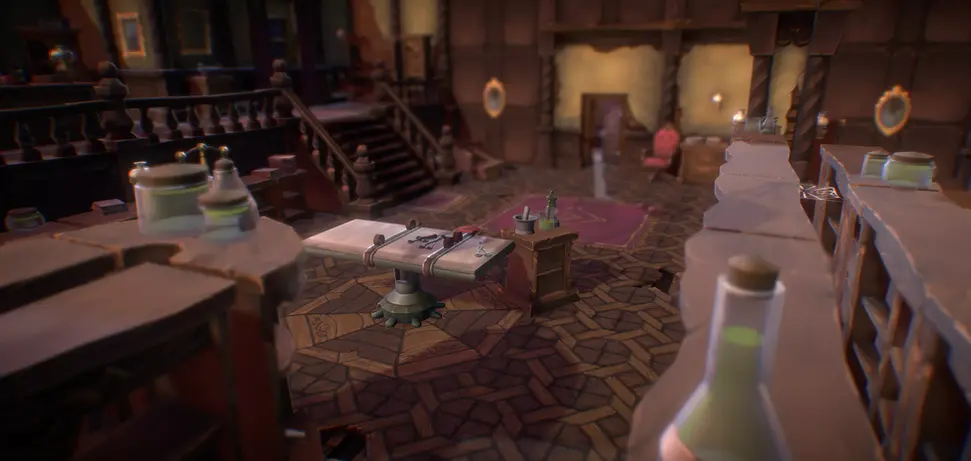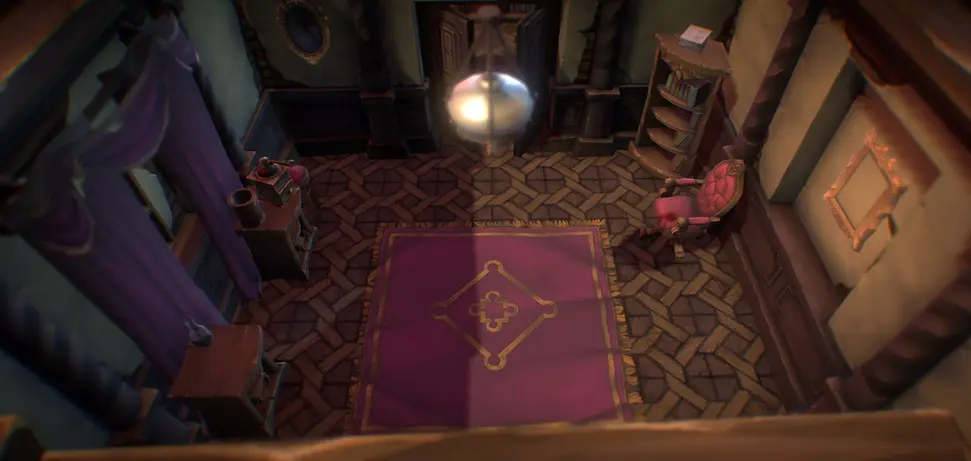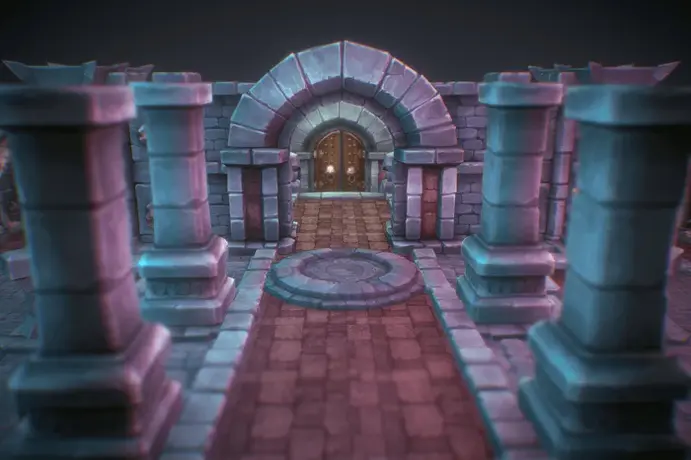Overview

Dead Look

SPOOKS and the haunted mansion


iOs & Android

3

6 months
Tasks & Responsibilities
-
Technical Game Design
-
Character Movement, Interactions & Animations
-
AI Behavior
-
Puzzle Design & Storytelling
-
Sound & UI Design
-
-
Level Design
-
Floor Planning
-
Designed more than 32 areas, using modular assets & props
-
-
Monetization Design
-
Ads Integration
-
In-game Currency Balancing
-
-
Video Editing & Marketing Materials
SPOOKS and the haunted mansion - Launch Trailer
This survival horror mobile game was my 1st commercial project I developed and released during my time at Dead Look Games. It is set in a small town during the 80s, where players step into the shoes of "Kevin", who is trying to find his missing friends in a haunted mansion, by solving puzzles and avoiding evil spirits.
The game was developed in Unity Engine for iOS and Android platforms, in under 5 months, leaving me space of 1 month to create all the necessary marketing materials. In terms of gameplay mechanics, players can explore the mansion, scavenge for clues, learn more about the lore, as well as replay with different outcomes each time.
As the technical game designer and level designer of the team, my work focused on developing each aspect of the project, from gameplay mechanics, level design, marketing materials and monetization systems.
Technical Game Design
Character Movement, Interactions & Animations
During the development of the game, one of the constant tasks was to define the character movement, interactions and the animations for both the player and the non-playable characters. There were plenty of different iterations to finalize the character movement, varying from Third Person Movement and First Person Movement, but nothing seemed right for the vision of the game and the constraints of the mobile games, in terms of usability, interface and optimization.
As a team, we decided that the movement of the character should be mixed with Third Person Movement and static cameras around the map. That would allow players to have better visibility of the gameplay elements and the environment as a whole. This decision allowed us to play iterate with more approaches in terms of other gameplay elements, like puzzles, lore objects and AI.
AI Behavior
As stated, players' primary objective was to rescue their friends in order to complete the game, each time with different predefined ways. However, other than solving the puzzles to reach them, they would have to avoid evil spirits in the mansion, which would appear at an incremental chance. If players get caught, they will have to start over or "buy" more lives with an in-game currency found on the map.
There were two different AI types in the game, one for the enemies and one for the companions. The enemy AI had simple mechanics like detect, chase, alert and attack. The companions AI had their own states, like idle, follow, caught and fleeing.
As it was a mobile game with limited interactions for the player, we wanted to develop it in a way that it was fair for the players to win/loose, but also as casual as possible for newcomers and experienced players.
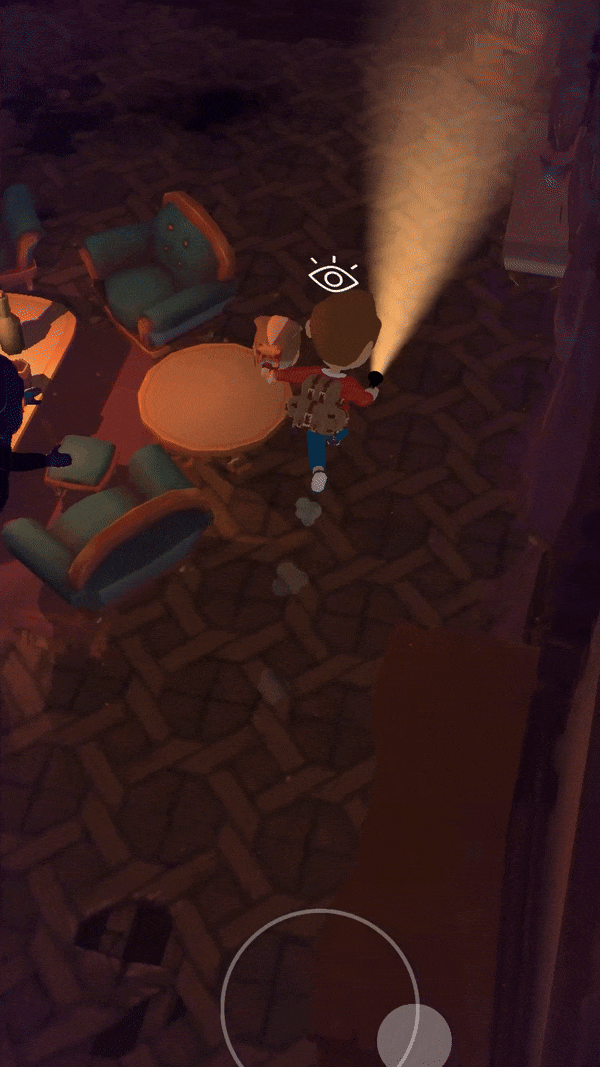
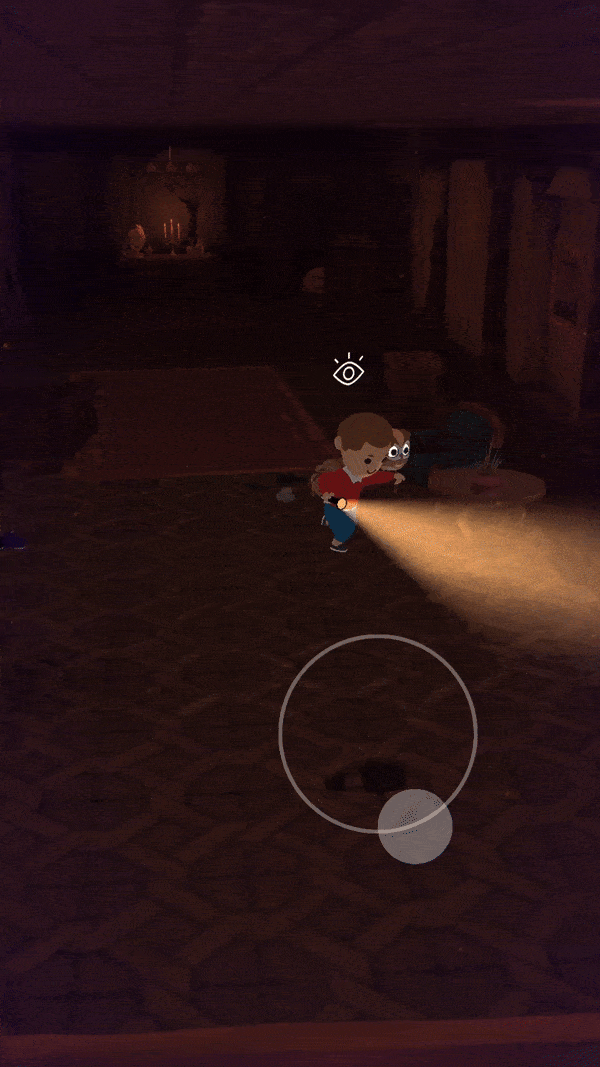
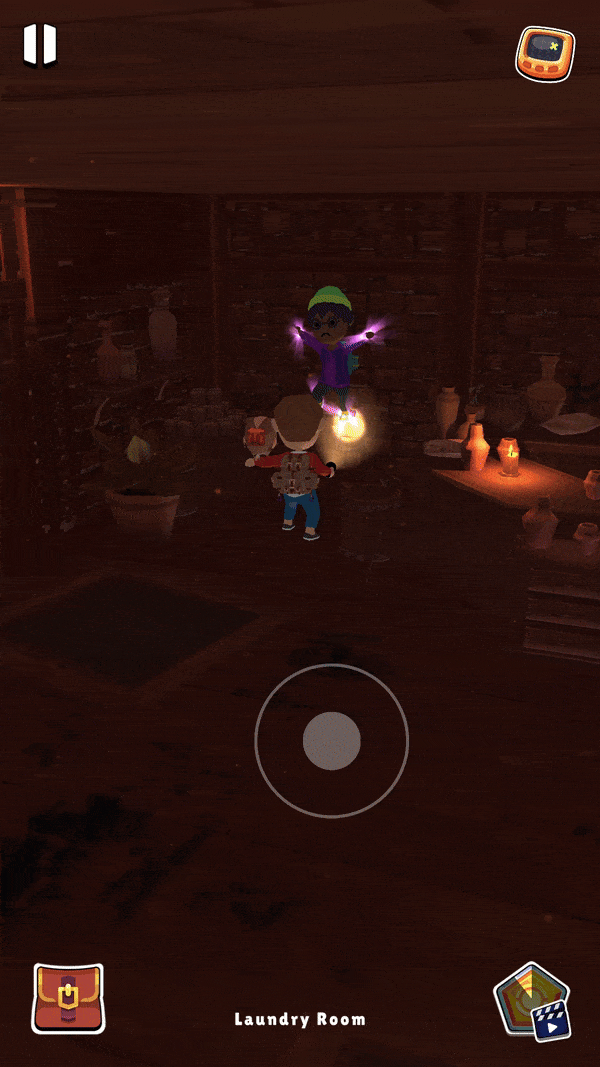
AI Behavior for Enemy AI & Companion AI.
Puzzle Design & Storytelling
In order to rescue all the companions, the game is focused a lot on the exploration aspect of the game. Players have to find all the hidden keys on the map to unlock new areas. These areas could be unlocked either with keys or different objects that would unlock secret paths at later stages of the game.
In terms of replayability, these objects would appear in different rooms and props each time a player was ready for the next playthrough. As the game could be completed in under 1 hour, we designed it in a way that users could differentiate their approach.
On top of the replayability, we also designed a lore around the map and the characters, which would make the players explore more of the history behind the mansion, their inhabitants as well as indicators of their missing friends. Like any other survival horror game, this aspect of the game was scattered around the map in different areas for players to inspect.

An example of one of the rescuing paths, in order to find one of the companions.

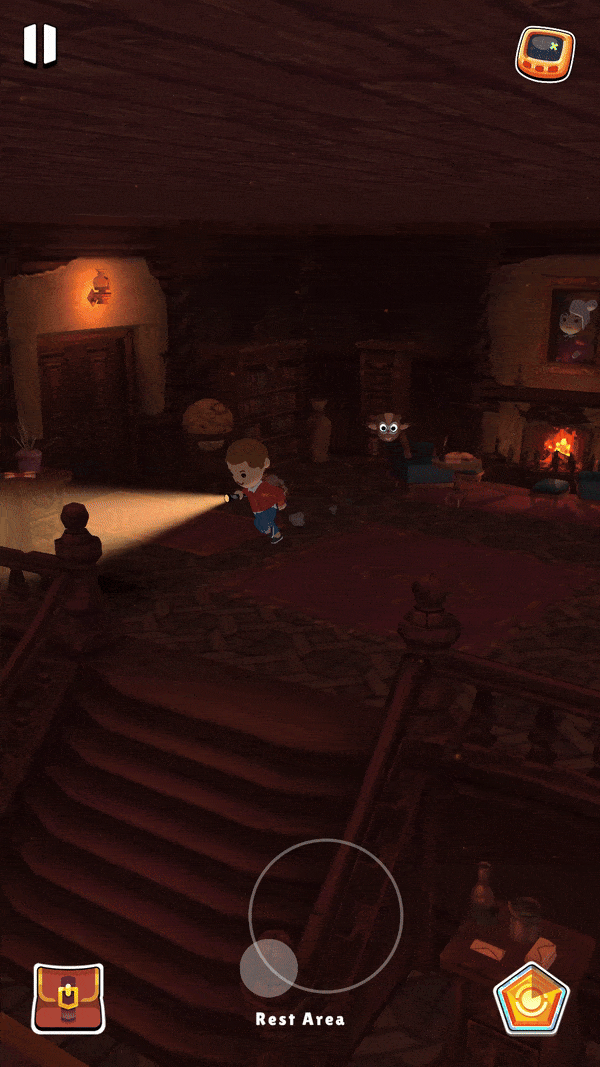
An example of puzzle interactions and lore object inspection.
Sound & UI Design
Other than all the above, I was heavily involved in the Sound and UI Design of SPOOKS, in order to immerse the players in the game and create a user-friendly environment. I integrated and mixed various ambient sounds to establish the game's atmosphere and immerse players in its horror setting, including background noises, distant screams and howling winds. Furthermore, I designed sound effects for various in-game events and actions, such as footsteps, door creaks, creature growls, button selection/usability etc. In terms of music, only the main menu had a music track, as well as a chasing music after detection, which was mixed by audio mixers inside the Unity's Engine environment.
As for UI elements, we used paid elements from the asset store, which matched the aesthetic of the game. However, I created a visually appealing interface such as menus, buttons, icons that were intuitive and immersive for players. I ensured that UI elements are easy to navigate and interact with, on different touch screens and aspect ratios, that would provide a seamless user experience.

Main Menu overview of the game.
Level Design
For the purpose of the game, I designed more than 30 interior and exterior rooms which could be unlocked at different stages of the gameplay. I used modular assets from the Unity Store from various developers that match the aesthetic of the game, in order to make the player vulnerable to different threats, with close encounters.
In order to make each room, I did lots of research in real-life mansions that would feel believable to the users, as well as I strategically placed props without blocking into the player's view and movement. On top of that, I had to think of different ways to design each room that would make the enemy encounter stressful, but also fair for the player.
Overall, each room serves three main factors for the game: exploration for puzzle solving and lore inspection, fair enemy encounters at close quarters, but easy to navigate and aesthetic pleasure to immerse the players into the world of SPOOKS.

Draft drawing for the bottom floor of SPOOKS.
A pack of various images of the game.
Other Responsibilities
Monetization Design
Like any other Free to Play mobile game, SPOOKS was heavily focused on ads and in-game transactions to generate revenue. Due to that, I had to integrate and design the ads in various forms, such as banner ads, interstitial ads in between specific game sessions and rewarding ads that could be exchanged for in-game rewards, like currency and extra lives. Furthermore, from the main menu, users also had the option to purchase ad packs, using real money that would benefit them with ad removals.
When implementing these monetization features, it was essential to strike a balance between generating revenue and providing a positive user experience. It was crucial to design ad placement and frequency carefully to minimize disruption while still maximizing revenue potential.
Marketing Materials
At the end of the development, I was also involved in designing marketing materials for social media, which was a crucial aspect of promoting the game and generating interest and engagement from potential players. I created visual assets that would grab attention on social media platforms, like eye-catching images and graphics, as well as teaser videos that showcase the game's key features, characters and atmosphere.
We also tried to maintain consistency in branding across all marketing materials to reinforce the game's identity and make it easily recognizable to the target audience. Lastly, I was involved on actively engaging with the audience by responding to comments and messages on social media, in order to foster a sense of community by encouraging discussion around the game.


Two of the marketing materials shared on social media.
